The student-led research initiative was titled Objects in Trouble, a name reflecting the troubled nature of museum collecting and interpreting at a time when institutions are increasingly playing a role in mediating cultural change and public
opinion on race, class, gender, privilege, and inclusion.
The collaboration between Parsons Paris’ MA Fashion Studies community and the Palais Galliera–Musée de la mode de la ville de Paris involved giving each of four student teams one object from the museum collection along with the assignment of responding
critically and creatively to the item through a performance. Working closely with museum staff, the student teams researched, posed questions, and created visuals to present their fashion-related items in new contexts and interpret them with fresh
and rigorous scholarly insight.
The results ranged from a performance exploring European class and beauty standards to one highlighting the history of colonialism and exploitative resource extraction to a reenactment shedding light on ceremonial garb in contrasting cultural contexts
to a close reading of an important publication satirizing French fashion.
The four projects explored the role of traditional collecting and presenting practices in controlling access to cultural phenomena and called for more diverse and inclusionary research approaches. Rather than condemning their objects of study for their
problematic nature, students challenged viewers to reimagine the ways in which museums negotiate the values embedded in fashion. The performances themselves represented an innovative way of enabling new audiences to engage with cultural and fashion
theory.
Hear about Objects in Trouble from the project partners and learn more about the four student projects.
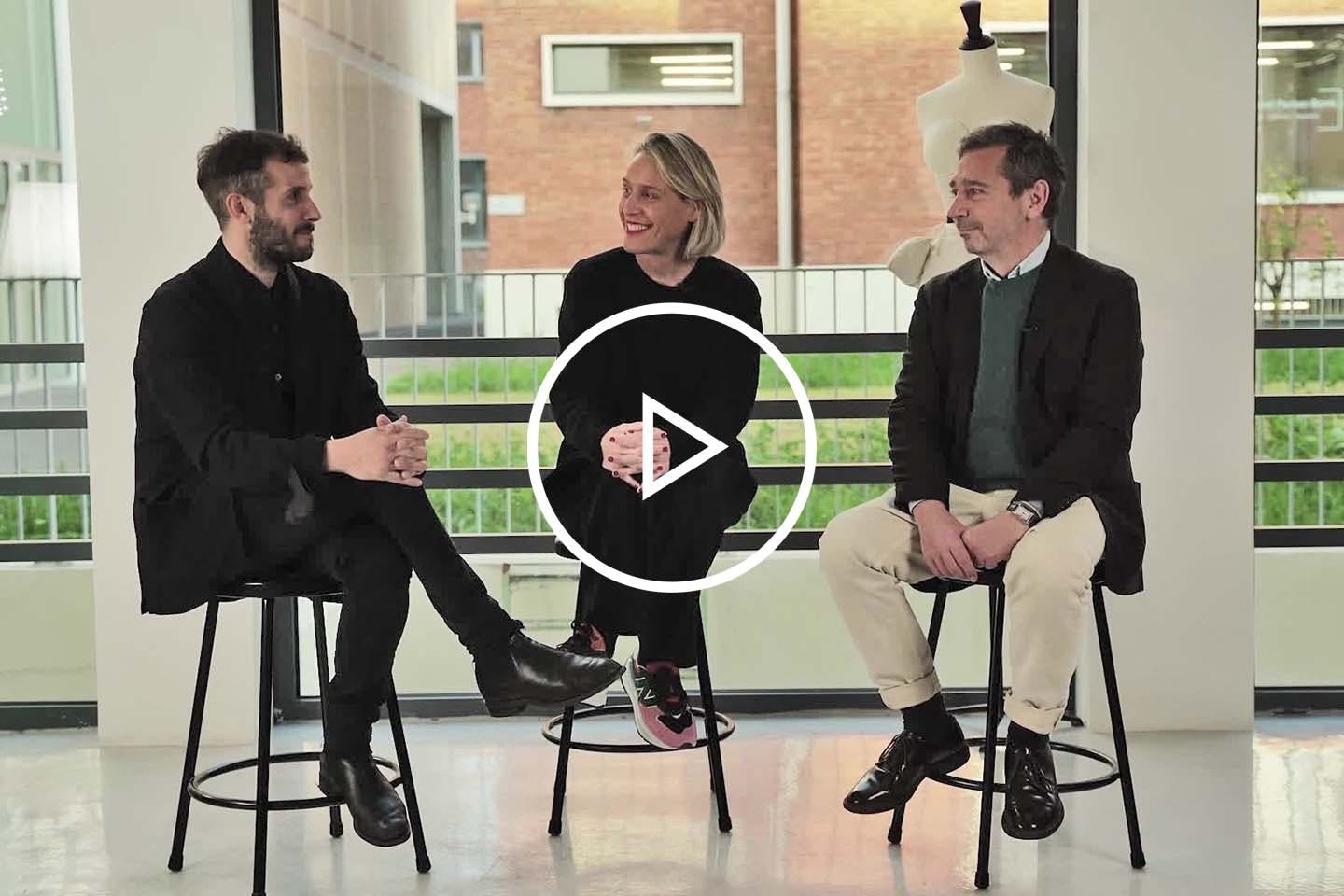
Hear Marco Pecorari, director of Parsons Paris' MA Fashion Studies program; Laurent Cotta, director of the Palais Galliera's Contemporary Creation Department; and Miren Arzalluz, director of the Palais Galliera, discuss the project's concept and
development.
31” - 20” - 31”
Curators: Mary Kelleher, Aishwarya Pureti, Ilaria Trame, and Jiaxuan Wu
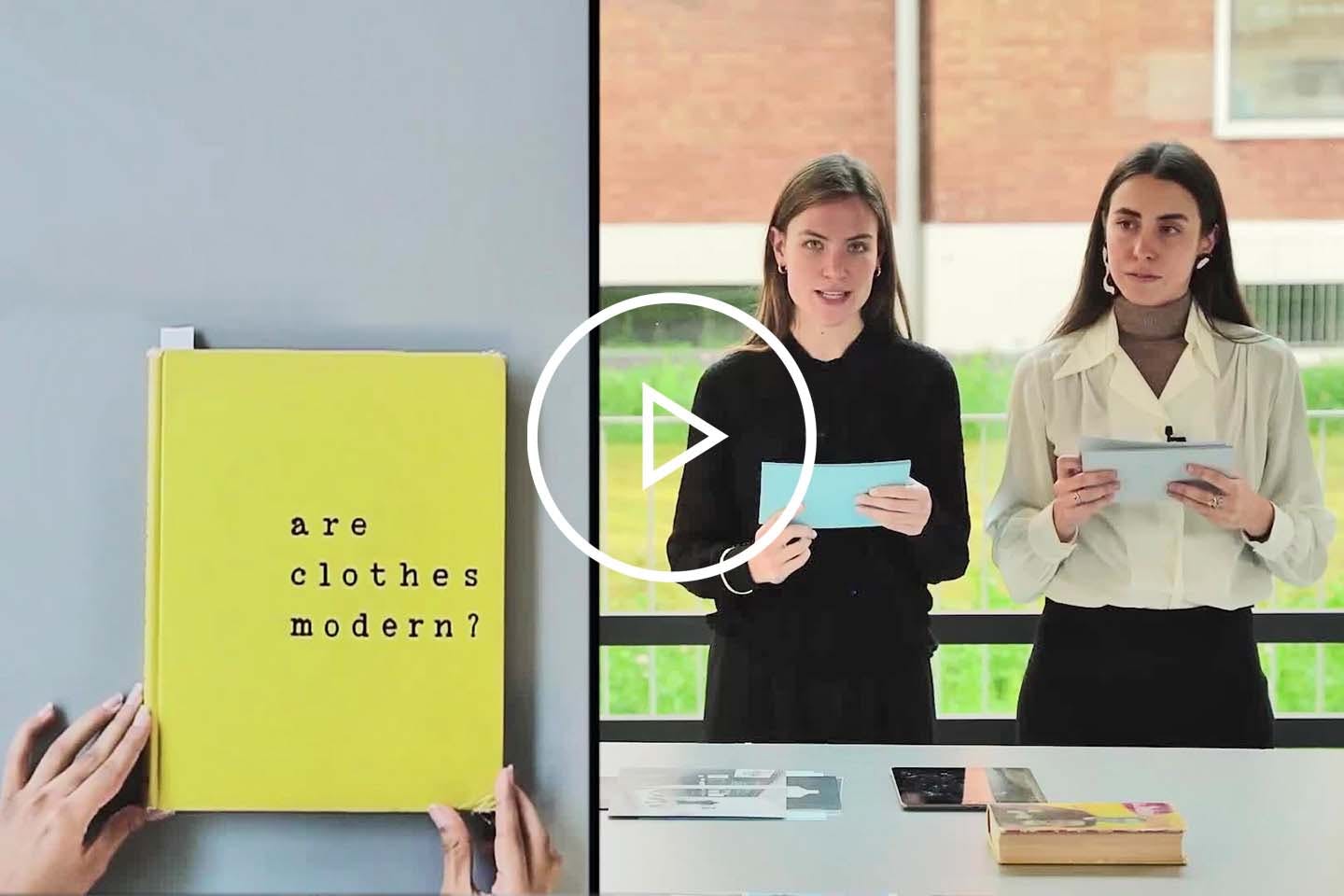 30” - 21” - 30” is a performance exploring the Dior 1952 Palmyre dress (GAL1971.45.1), owned by Wallis Simpson, duchess of Windsor, and donated by her to Palais Galliera. Students explored dualities including vast wealth and extreme thinness,
simple adornment and elaborate ornamentation, and the conveyance of royal status through appearance—ideas embodied in the New Look created by Dior during that period and in the Palmyre dress in particular.
30” - 21” - 30” is a performance exploring the Dior 1952 Palmyre dress (GAL1971.45.1), owned by Wallis Simpson, duchess of Windsor, and donated by her to Palais Galliera. Students explored dualities including vast wealth and extreme thinness,
simple adornment and elaborate ornamentation, and the conveyance of royal status through appearance—ideas embodied in the New Look created by Dior during that period and in the Palmyre dress in particular.Illusion/Disillusion: The Paradoxical Gap of Fashion
Curators: Maria Ida De Ioanni, Ayaka Kitagawa, Rhea Saad, and Treonna Turner
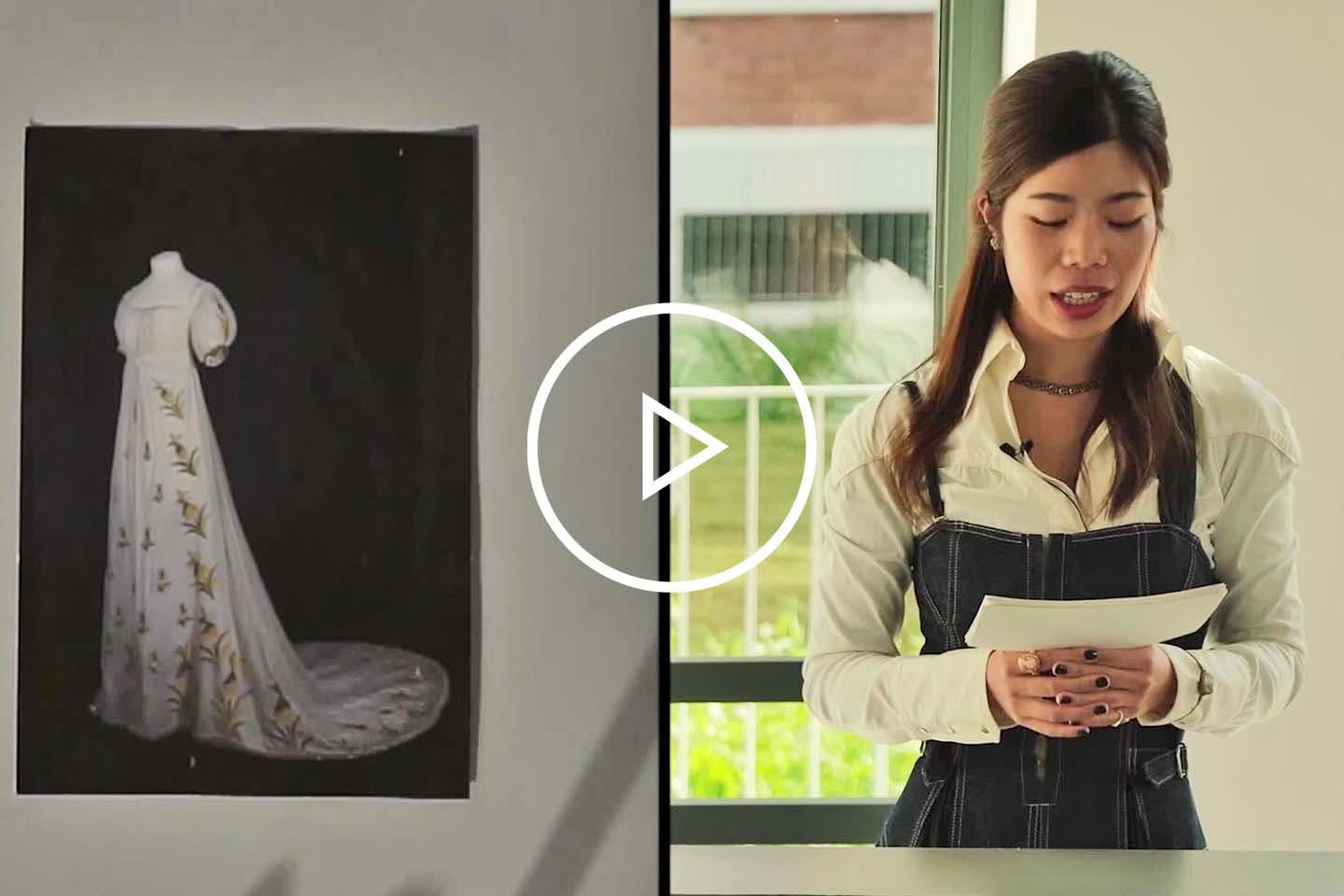 Illusion/Disillusion invites the audience to examine the underlying characteristics of fashion as a mediator of illusion and is designed to help the audience demystify the illusions in turn. The performance employs a cotton gown featuring
images of pineapples that was worn in the French court circa 1805 (GAL 1962.108.28) for an investigation underscoring the paradoxical gap between the dress as an object of consumption and the process of its production. The performance is aimed
at uncovering the hidden history of exploitation and slavery embodied in the garment through a demystification of the symbolic connotations of the gown’s cotton material and images of pineapples.
Illusion/Disillusion invites the audience to examine the underlying characteristics of fashion as a mediator of illusion and is designed to help the audience demystify the illusions in turn. The performance employs a cotton gown featuring
images of pineapples that was worn in the French court circa 1805 (GAL 1962.108.28) for an investigation underscoring the paradoxical gap between the dress as an object of consumption and the process of its production. The performance is aimed
at uncovering the hidden history of exploitation and slavery embodied in the garment through a demystification of the symbolic connotations of the gown’s cotton material and images of pineapples. The Profane: Desecration of the Mandchou Coat
Curators: Maria Ida De Ioanni, Ayaka Kitagawa, Rhea Saad, and Treonna Turner
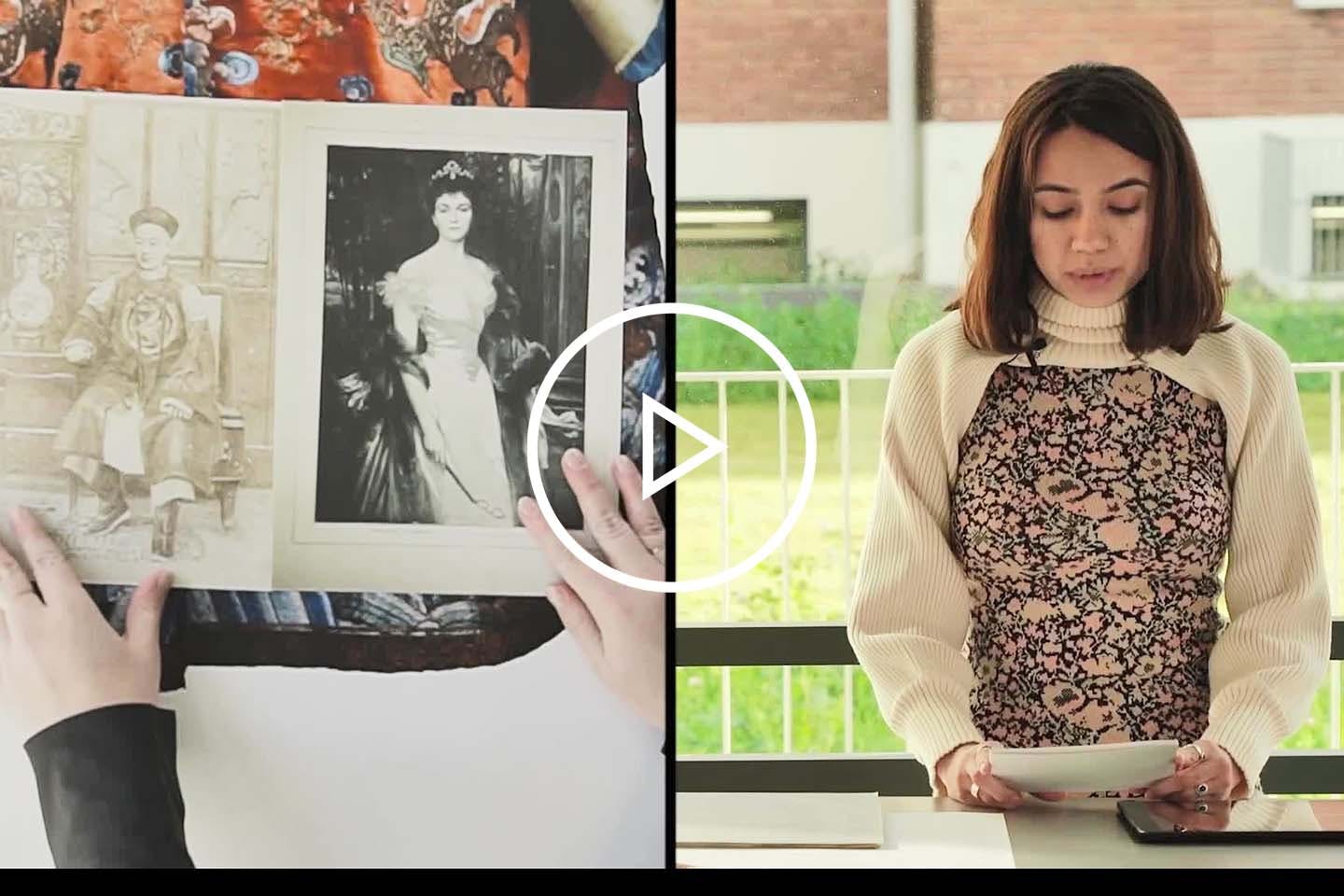 This performance delves into the Imperial Coat (GAL 1961.65.6), which was worn by the Emperor Guangxu in China and later by Princess Murat in France and demonstrates how this object had different “social lives,” having been owned by different people
in different places and cultural contexts. Stories are reenacted to reveal how the coat still evokes these embodied lives and how the power dynamics between conceptions of West and East can be seen as actions of profanation of the symbolic value
of the garment.
This performance delves into the Imperial Coat (GAL 1961.65.6), which was worn by the Emperor Guangxu in China and later by Princess Murat in France and demonstrates how this object had different “social lives,” having been owned by different people
in different places and cultural contexts. Stories are reenacted to reveal how the coat still evokes these embodied lives and how the power dynamics between conceptions of West and East can be seen as actions of profanation of the symbolic value
of the garment.Le Vrai et le Faux: Fashion Binaries of the Belle Epoque
Curators: Stephanie Lever, Jaqueline Lopez, and Noyonika Sicar
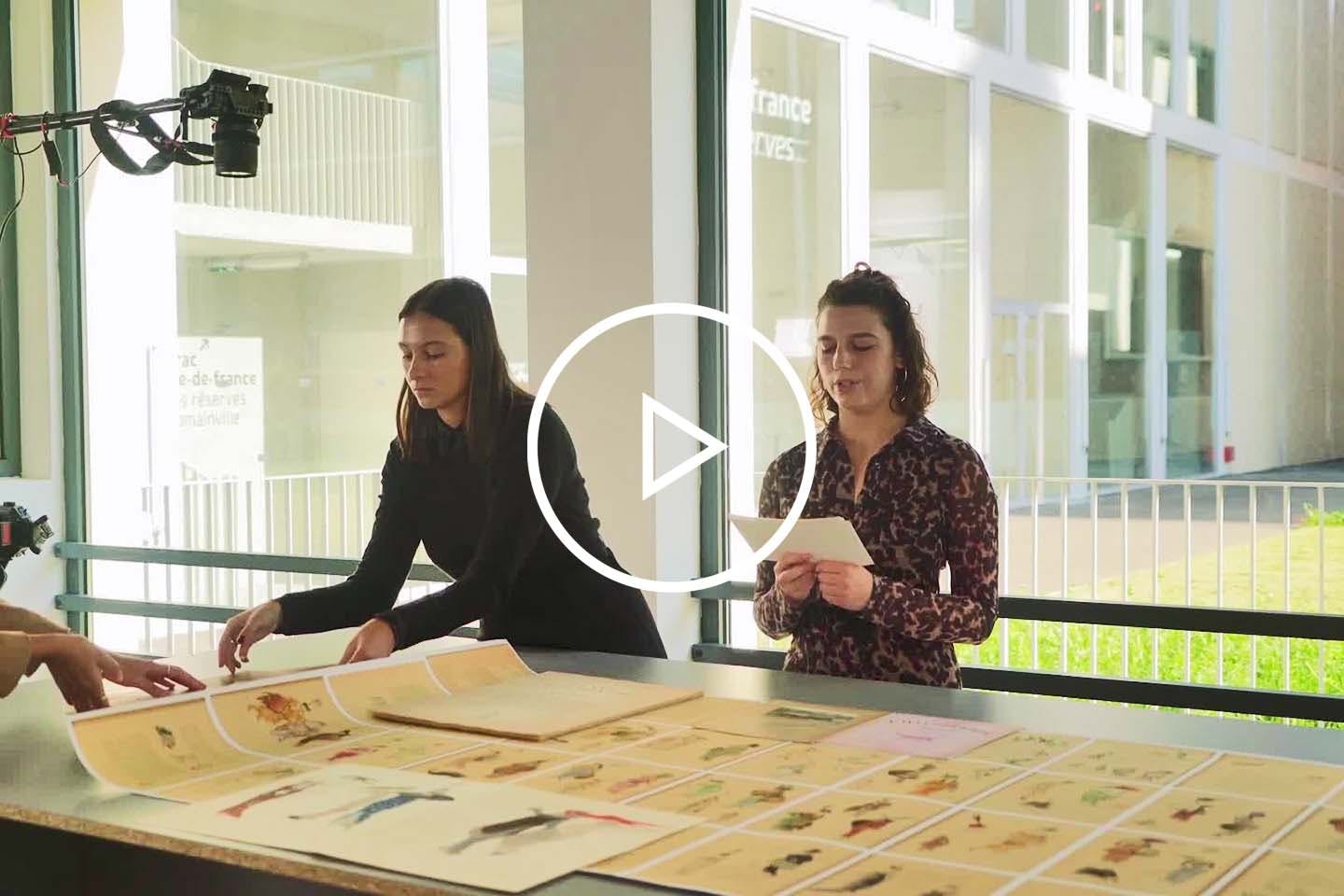 Le Vrai et le Faux: Fashion Binaries of the Belle Epoque deconstructs the dynamic and, at times, problematic binaries at play in the fashion system. The performance centers on Le Vrai et le Faux Chic, a book created by the famed
French caricaturist Georges Goursat (known as SEM), which is filled with literal and figurative representations of the Parisian elite. The performance reveals how the caricatures and texts in the album together perpetuate complex fashion binaries
and diktats of fashionability. It questions how, why, and to what extent these binaries still play a role in fashion today.
Le Vrai et le Faux: Fashion Binaries of the Belle Epoque deconstructs the dynamic and, at times, problematic binaries at play in the fashion system. The performance centers on Le Vrai et le Faux Chic, a book created by the famed
French caricaturist Georges Goursat (known as SEM), which is filled with literal and figurative representations of the Parisian elite. The performance reveals how the caricatures and texts in the album together perpetuate complex fashion binaries
and diktats of fashionability. It questions how, why, and to what extent these binaries still play a role in fashion today.Objects in Trouble project team:
Concept: Laurent Cotta and Marco Pecorari, with the support of Miren Arzalluz
Curators: Jun Chen, Jessica Clark, Maria Ida De Ioanni, Renata Hernández, Mary Kelleher, Ayaka Kitagawa, Stephanie Lever, Jacqueline Lopez, Bethany Miller, Aishwarya Pureti, Rhea Saad, Noyonika Sircar, Ilaria Trame, Treonna Turner, and Jiaxuan Wu
Exhibition Design: Justin Morin
Research Support: Antoine Bucher
Communication: Margaux Brisson and Lisa Sarma
Special thanks to Morna Laing and Florence Leclerc-Dickler